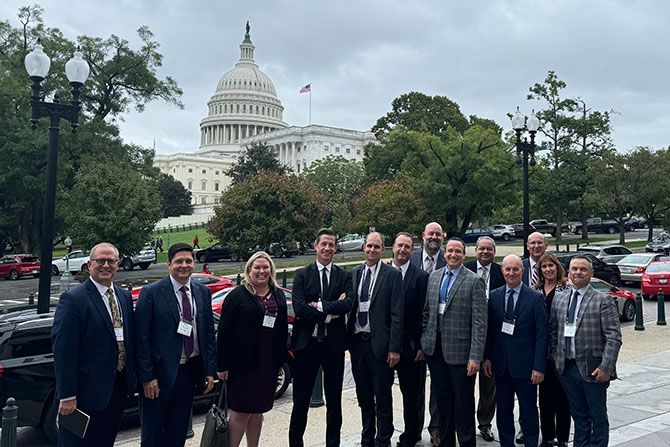In 2023, failures of large financial institutions shook consumer confidence in banking. In fact, a May 2023 poll from The Associated Press-NORC Center for Public Affairs Research found that only 10% of adults in the U.S. had “high confidence in the nation’s banks and other financial institutions” — less than half the amount that reported high confidence in 2020.
Despite this, big banks manage more than 70% of consolidated assets among FDIC-insured banks, up from 42% in 2003. Meanwhile, the number of community banks in the U.S. shrank by nearly 50% in the same time period.
From supporting small businesses to reaching communities that may have more limited access to banking services, small banks play a vital role in the communities they serve.
So how do these smaller institutions effectively reach consumers and level-up for sustainable growth on a playing field built for a handful of behemoths? And, with increased scrutiny by federal regulators on smaller banks that have financial technology partnerships, how will they be able to stay ahead in an industry that’s becoming more and more digital?
Here are three ways that community banks are differentiating themselves and finding fintech solutions to solve their unique challenges:
- Highlight Their Impact to Build Consumer Confidence
With more focused footprints, it can be easier for community banks to have outsized impacts on their local areas.
One such institution is Ponce Bank, a certified Community Development Financial Institution founded in The Bronx, New York. Its founders countered the attitude that theirs was a community in decline and, in the decades since, Ponce Bank has remained focused on bringing banking services to areas where that help is in highest demand.
“A rising tide lifts all boats,” says Carlos Naudon, CEO of Ponce Bank. Indeed, 75% of Ponce Bank’s loans go to people in low- to moderate-income neighborhoods and over 80% of their loans go to communities they serve.
In addition to community development, mission-led banking in the form of financial donations, employee volunteer hours or other programs also gives smaller institutions an ability to set themselves apart.
Mission Valley Bank, another CDFI based in Sun Valley, California, was founded by people who are dedicated to working in and serving their community.
Founder, President and CEO Tamara Gurney has made it her pledge to build and nurture relationships that empower both business and the communities that they serve. Under her leadership, Mission Valley Bank embodies a steadfast dedication to fostering meaningful connections and driving positive change.
They prioritize the financial success of their customers and the well-being of the community above all else. Through initiatives like the Give Where You Live program, launched in 2015, they shine a spotlight on local nonprofit organizations and encourage support from their community members.
Anthony Chuan, EVP and chief financial officer, encapsulates their ethos perfectly: “Success for one means success for all. Serving our customers and the community as a whole goes hand in hand for us.”
Highlighting community-focused or mission-led efforts offers smaller banks ways to distinguish themselves as well as to organically reverse the tides of consumer confidence in banking. - Solutions to Grow, Innovate and Compete for Deposits Despite Regulatory Scrutiny
Achieving sustainable growth for smaller banks can also prove difficult as their costs on everything from compliance to cybersecurity to sourcing deposits can be much greater than those incurred by larger institutions.
For instance, the Conference of State Bank Supervisors found that compliance costs were typically around 10% of non-interest expenses for smaller banks compared to 5% for larger institutions. Costs of cybersecurity measures can also be proportionally higher for smaller institutions, adding to the already competitive edge larger institutions have.
Those looking to compete with the economies of scale enjoyed by systemically important financial institutions have looked to financial technology solutions, which can help them grow and innovate — without the additional overhead.
In light of guidance from regulators with regards to fintech partnerships, following the recent Synapse insolvency, it may seem as though the increased scrutiny by regulators would make banks want to avoid such associations. However, with strong risk management policies and a thorough diligence protocol, fintech partnerships can be key to helping smaller banks meet their growth goals, test new products and rates, and access cost-effective funding, all while avoiding sunk infrastructure costs and administrative burdens. - Agility in Pricing
Despite a historic series of rate increases by the Fed, many larger financial institutions continue to offer as little as 0.01% APY on savings accounts. This has given smaller banks the opportunity to offer American savers a much-needed lifeline.
In responding to this environment, smaller institutions have utilized digital savings platforms like Raisin to get in front of consumers across the U.S. and source deposits quickly and competitively. They do this by offering interest rates that are significantly more competitive than those offered by larger banks, all while sharing their unique stories and roles in their communities. It’s a win-win as consumers can have something to feel proud about as they grow their savings, and smaller banks are able to test products and rates with an audience of savers beyond their traditional deposit footprint.
Leveling the playing field for smaller banks can be difficult, but remains possible through a combination of initiatives and strategies that grow consumer confidence and look toward a more digital future.
By highlighting their larger potential impact on their local communities, giving back through charitable programs and offering more tailored services, smaller banks have a unique ability to set themselves apart.
On the technology front, smaller banks also face powerful headwinds. However, strategically partnering with innovative technology solutions can help them level up service and efficiently tap new markets.
Finding financial technology solutions like Raisin’s digital funding platform can help these smaller banks seamlessly source retail deposits, without the added compliance, security and servicing costs, giving them a leg up to succeed in an increasingly digital economy.
Cetin Duransoy is the chief executive officer of Raisin US, a unique turnkey digital solution that allows banks and credit unions to expand their reach and source funds from depositors nationwide, with KYC, AML, marketing and customer service included. With over 20 years of experience, Duransoy previously served in senior positions at companies including Capital One and Visa, as well as president and chief operating officer for fast-growing fintech Fundbox.









